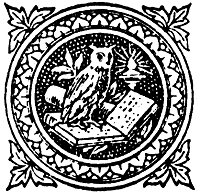Marginalia
Home
About Marginalia
Current Issue
Archived Issues
Notes to Contributors
Links to Other Online Journals
Marginalia -- The Website of the MRG
Chaucerian Aesthetics
242 pages, Palgrave Macmillan: New York, 2008
$79.95, ISBN-13: 978-0-230-60668-5
Following the rise of various ideological critiques in the past few decades, aesthetic approaches have largely retreated amid charges of academic elitism and outdated liberal humanism. Indeed, aesthetics necessarily raises a certain discomfort in regards the study of medieval texts. Fourteenth-century verse does not lend itself as easily to pure considerations of form, or delight in word-play, for example, because of the perceived cultural chasm. Any study of medieval texts involves some element of contextual knowledge, if only linguistic.
Acknowledging these causes for resistance, Knapp argues for an 'updated' aesthetics. As she writes, 'if aesthetic considerations are to be reintegrated into critical discourse, they must acknowledge the complex interactions between art and the social formations attendant on its making and first reception, as well as the equally complex relations, between that art and our time' (p.2).
Kant's Critique of Judgment does not account for historic change or ideological interests, and aesthetics responses do not arrive at particular ends or 'concepts'. Such a foundation is incompatible with many modern methods of interpretation, particularly those often employed by medievalists. However, Knapp proposes an alignment of Kantean aesthetics with Gadamerian hermeneutics to present a means of reading that is sensitive to the past and present. In his hermeneutic theory, Gadamer acknowledges that all readers approach texts with certain 'fore-conceptions' borne of particular cultural circumstances. However, these prejudices may be altered through reading and understanding of contexts. As Knapp writes, 'In the case of Chaucerian texts, the [hermeneutic] circle can be continually enlarged to include a broader sense of medieval culture (resulting from new findings in social and cultural history) and of verbal suggestiveness (resulting from developments in literary theory and historical linguistics)' (p.12).
Such a union suspends the critical tension between the aesthetic and the ideological, perceived by the either as solipsistic and reductionist. Setting the sensible and the intelligible in dialectic allows for pleasure, because however informed our reading may be, interpretation need not be determined by history.
Yet how can any aesthetic reading be historically sensitive to the Middle Ages when for medieval theologians, the intelligible must always be the goal of the sensible? Without a moral, literature is vanity at best, sinful and destructive at worst. Knapp argues that modern aesthetics is not incompatible with an ethical pursuit. However, this ethics is not reducible to a prescribed concept. Though acknowledging that many medieval theories did strive to reduce art and literature to a concept (in particular caritas), this is not the mode of Chaucer's poetry, or certainly not that which we enjoy today, Knapp argues.
It is here, I think, the book falters a bit. While successfully extrapolating an aesthetic theory from a range of medieval authors, it leaves the rich trove of medieval hermeneutics largely untouched. Gregory the Great, for example, treats the historical and individual circumstances each reader brings to bear on the text and the implications of these forces for a plurality of interpretations.
Nevertheless, it is more the project of her book to articulate a theory of modern response to Chaucer than to argue for a medieval one. In lucid and vibrant prose, Peggy Knapp offers an aesthetic critique of Chaucer's major poetic works, The Canterbury Tales and Troilus and Criseyde. Chapters are arranged around genre, character, femininity, humour and iterations of community. Throughout these themes, she describes the interplay of the intelligible and the sensible (or the type and the individual) that delights in Chaucer.
The fruits of this approach do not yield particularly surprising revisions of past readings. It affirms V. A. Kolve for his understanding of Chaucer's imagery as both 'realistic and iconographic'. It pities D.W. Robertson for his inflexibly Boethian, and ultimately, joyless reading of Troilus. It chides Elaine Tuttle Hansen for reducing Criseyde to a paradigm.
Although provocative to read medieval texts through modern aesthetics, Knapp arrives at an incontestable thesis: that art is fundamentally irreducible to ideology, to history, to form. So, perhaps Chaucerian Aesthetics ultimately offers old wine in new wineskins. However, if Knapp is right in reading with Gadamer, then that's what will keep Chaucer alive.
Virginia Langum, University of Cambridge
 Contents |  Next |
© 2004 The authors and the Medieval Reading Group at the University of Cambridge
No material may be reproduced without written authority.
Last modified on .
Marginalia -- MRG Website::Contact Us::About Us::Credits and Thanks::Search::Archives

